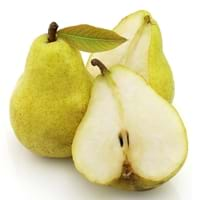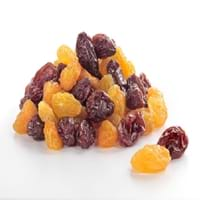Health Benefits
Arthritis prevention, Cancer prevention, Gout treatment, Heart care
Acidity treatment, Cancer prevention, Good for diabetics, Prevents constipation, Prevents Anaemia
General Benefits
Anti-inflammatory properties, Boosts immune system, Controls blood pressure, Controls blood sugar levels, Cures fever, Digestive aid, Sore throat treatment
Boosts immune system, Cures fever, Eye care, Fights against infections, Strengthens bones
Skin Benefits
Reduces wrinkles, Treatment of acne
Anti-aging benefits, Reduces wrinkles, Skin rejuvenation
Hair Benefits
Promotes longer and healthier hair, Shiny hair
Protects hair
Allergy Symptoms
Anaphylaxis, Digestive Problems, Itching, Skin Rashes, Swelling
Anaphylaxis, Asthma, Breathing difficulty, Coughing, Drop in blood pressure, Hives, Skin rash, Stuffy nose, Swelling of mouth, tongue or lips, Wheezing
Side Effects
Allergic reaction
Allergic reaction
Lactating Women
Yes
Not Available
Best Time to Eat
As a snack in the late afternoon, Don't consume at night and before bed, Eat the fresh ones, avoid mixing with any other foods, don't eat after meal., Morning time (before lunch)
Any time except an hour after meal
Vitamin B5 (Pantothenic Acid)
Vitamin C (Ascorbic Acid)
Vitamin K (Phyllochinone)
Phytosterol
Not Available
Calories in Fresh Fruit with Peel
Calories in Fresh Fruit without Peel
Not Available
Not Available
Calories in Frozen Form
Not Available
Not Available
Calories in Dried Form
Not Available
Not Available
Calories in Canned Form
Not Available
Not Available
Season
Autumn, Summer, Winter
All seasons
Varieties
Green Anjou, Red Anjou, Bartlett, Red Bartlett, Bosc, Comice, Concorde, Forelle, Seckel and Starkrimson
Dark raisins, White or golden raisins, Sultanas and Currants
Seedless Variety
Yes
Not Available
Color
Yellow
Black, Blue, Green, Purple, Yellow
Taste
Crunchy, Sweet
Sweet
Origin
China, Japan
Central Europe, Western Asia
Grows on
Trees
Not Available
Soil Type
Clayey, Loamy, Sandy
Clay loam, Sandy loam
Climatic Conditions
Cold, Hot, Without frosts
Warm
Facts about
- The first pear tree was planted in North America in 1620.
- The Chinese considered the pear fruit to be a symbol of immortality.
- This fruit was used as a natural remedy against nausea in ancient Greece.
- 30th April is known as National Raisin Day.
- Fresno, California is known as raisin capital of the world.
- Half of world's raisin supply is produced in California.
Top Producer
China
United States of America
Other Countries
Argentina, Belgium, India, Italy, Japan, South Africa, Spain, Turkey, United States of America
Afghanistan, Argentina, Australia, Chile, China, Iran, South Africa, Turkey, Uzbekistan
Top Importer
Europe
Europe
Top Exporter
China
Turkey
Botanical Name
Pyrus communis
Vitis Vinifera
Synonym
Not Available
Not Available
Subkingdom
Tracheobionta
Tracheobionta
Division
Magnoliophyta
Magnoliophyta
Class
Magnoliopsida
Magnoliopsida
Subclass
Rosidae
Not Available
Species
P. communis
Vitis vinifera
Difference Between Pear and Raisin
We might think that Pear and Raisin are similar with respect to nutritional value and health benefits. But the nutrient content of both fruits is different. Pear and Raisin Facts such as their taste, shape, color, and size are also distinct. The difference between Pear and Raisin is explained here.
The amount of calories in 100 gm of fresh Pear and Raisin with peel is 57.00 kcal and 299.00 kcal and the amount of calories without peel is Not Available and Not Available respectively. Thus, Pear and Raisin belong to and category.These fruits might or might not differ with respect to their scientific classification. The order of Pear and Raisin is Rosales and Vitales respectively. Pear belongs to Rosaceae family and Raisin belongs to Vitaceae family. Pear belongs to Pyrus genus of P. communis species and Raisin belongs to Vitis genus of Vitis vinifera species. Beings plants, both fruits belong to Plantae Kingdom.









